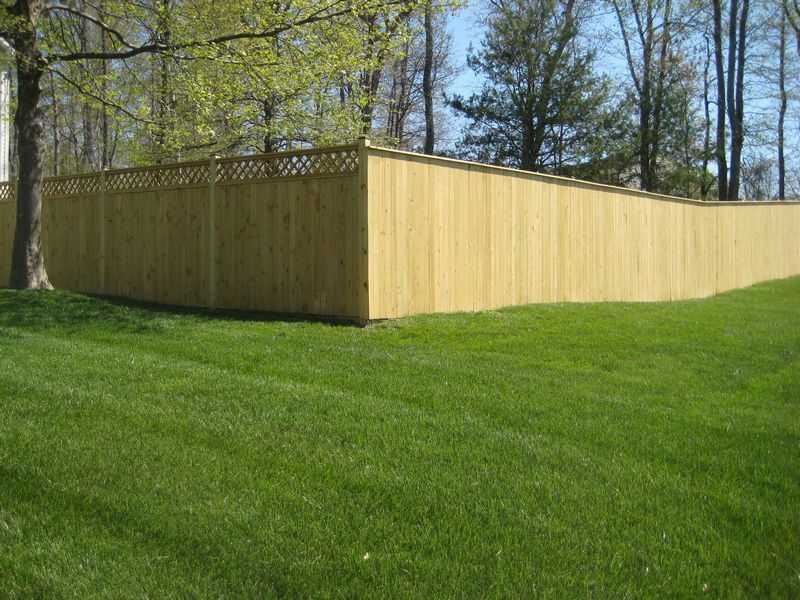What goes into a wood fence? We see them everywhere — residential neighborhoods, commercial areas, rural farms, and so many other places. There are so many different types of wood fences: board on board, board and batten, split rail, stockade, paddock, estate, spaced board, picket, and vertical board. Wood fences are timeless, classic, and very sophisticated. Not only are they incredibly visually appealing, but they are also astonishingly affordable. For people looking to cost-effectively elevate their landscape appeal, wood fences are a strong addition to a backyard.
Wood fences look very simple, and they are, but they also have a multitude of component parts that adds to their structural and aesthetic appeal. Here, we’ve broken down for you many of the component parts of a wood fence. Not only will this list help you to assemble your own fence, if you choose to do that, but it will also help you to understand how the professionals construct wood fences.
Posts
Posts are the part of the wood fence that get buried into the ground. Posts provide the important support to keep the fence standing upright. If the post is not properly secured in the ground, the fence falls over. In order for the fence to remain standing, the posts must be buried deep into the ground.
It is important to note that boards and posts are often confused with each other. Boards are the parts of the wood fence that keep the fence sturdy, while posts are the multiple slats that you can see from afar. Boards tend to be substantially thicker than posts, and they may jut out from the fence more than boards will.
Boards
The most obvious component to a fence is the boards. Boards are the most conspicuous part of the fence because they make up the foundation of a wood fence. The boards are what allow the wood fence to stay up standing. The board is also what aesthetically defines the fence. If the boards are made out of picket wood, then the wood fence is a picket fence. The amount of space between the boards varies based on the type of wood fence.
Gates
Gates are doors in the fence that allow people and cars to drive through. Attached to the fence by a hinge, the gates control what enters and exits the fenced yard. Gates can be located at the end of a driveway to control cars entering and exiting the plot, and gates can be on the side of the house, controlling what enters and exits the yard. There are so many different types of gates, and they are arguably the most decorative part of the fence. Gates can range from ornate to classic to minimalist. Gates can also blend into the fence or be its own unique design. There is so much that can be done with gates to elevate the aesthetic of your fencing.
Backer rails
Backer rails are the horizontal wooden boards that run across the boards in a wood fence. The backer rails are what connect the different boards to each other. Backer rails, quite literally, back the fence. Backer rails, like posts, provide structure and support for the entire fencing structure. The backer rails are a vital component to a wood fence because allow the fence to stay horizontally connected.
While the posts are important to keep the wood fence standing, backer rails are important for keeping the fence clipped together.
Caps
Entire decorative, caps do not serve any real function for wood fencing except to provide creative aesthetics. Caps can do much to elevate the appeal of fencing, creating a drastic change from simple, wooden fence to fancy, attention-grabbing fence. Caps are separate pieces that sit on top of the posts, so they stand out. Caps are a simple addition that you can do yourself, once you get your fence installed!
Kick board
Kick boards are great for protecting your fence against damage. Though kick boards don’t have any utilitarian function, they protect the bottom of your wood fence from damage. Kick boards are vital for if you have small children in your house who play soccer, who are likely to kick a ball into the fence and damage the boards.
Trim board
Purely for aesthetic purposes, trim boards on a wood fence add extra aesthetic appeal. They wrap around the back side of the fence. Trim boards are not commonly used, but they can uplift the aesthetic of your wood fence.
As you can see, there are a multitude of different components that make up a wood fence. Each component serves its own purpose. While wood fences are really simple, there are also many components that give them the ultimate residential look.
Read More:

